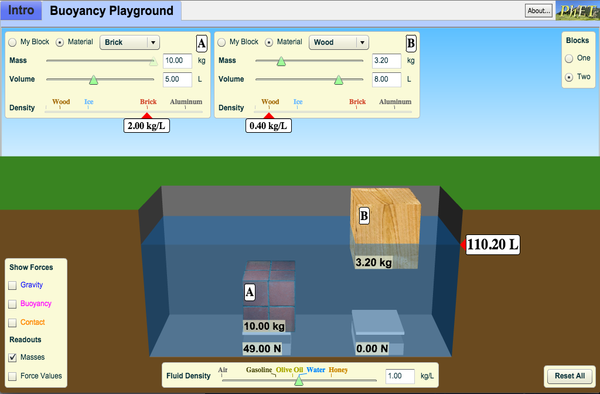9 Additional Features Improving and Leveraging Digital Literacy
Videos
GIFs

Personalized Data
Everyday Examples: Landing after a Jump
You naturally tend to bend your knees when landing after a jump, rather than keep your knees locked and your legs rigid. The reason is that rigid legs bring you to an abrupt stop, but bending your knees allows you to spread the landing out over a longer time, which we now know reduces the average force.

The force vs. time graphs show the normal force applied to a person when landing on one foot after stepping off from a 0.1 m height as seen in the previous GIF. The graph on the left was the more rigid leg landing (it didn’t feel good) and the graph on the right was a bent-knee landing.

Notice that the stiff-legged “hard” landing nearly doubled the peak force applied to the body.
Interactive Simulations

Multimedia/Digital Data Acquisition Activities

Simulation Building Activities
https://gfycat.com/HollowVengefulFlamingo
Numerical Modeling Activities


